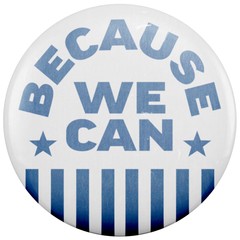Because We Can is an ongoing series about making politics a practice, even when there isn’t a national election looming.
Advertisement
During COVID-19, Sutton told VICE, “there was this recognition of how important these spaces are to our mental health and our physical health. When gyms closed, parks were open. I say it all the time: I wouldn't have made it through [the pandemic] without my local parks!” According to a May 2020 survey by the NRPA, 83 percent of adults polled said their local parks were “essential” for their well-being and two-thirds of all park professionals polled reported increased use of their agencies’ parks compared to the same time period in 2019. Because they became so central to our lives, Sutton said the NRPA also saw parks departments shouldering more responsibilities than ever: Throwing virtual events for kids stuck at home; providing meals to seniors who couldn’t venture outside safely; beefing up services for unhoused people with nowhere else to turn during a volatile time; and keeping up with maintenance during periods of extremely high traffic.This all means that even as we return to “normal,” with social spaces reopening and vaccine numbers in the U.S. ticking upward, parks deserve a hearty “thank you for… everything!” in the form of some good old-fashioned public service. Not sure where to start? Here are a few easy ways to give back to our parks and make our communities a better place to live—and to chill—in the process.
Advertisement
Reach out to your local parks department.
Help fund projects that are already in motion.
Advertisement
Organize a park clean-up.
Push for pro-park policy.
Advertisement
Another way to show up for parks is to literally show up: “Seek out more park and recreation events and programming to attend,” she said. “The more attendance that they have at events and the more that they can show that people are using their programs, that gives them leverage to go back to the city government and say, ‘Hey, our programs are being used, we need more funding.’” Basically, help parks put city money where your mouth is—sipping on something fruity and a little alcoholic, enjoying public life, and feeling relieved while you soak up the sun in your local green space.This is basic, but definitely bears repeating: Treat the park the way you’d want guests to treat your living space. Be respectful of your fellow park goers, just like you would be of neighbors when throwing a house party, and act like somebody will have to clean up after you… because someone will, whether or not you see them! “Someone trims the grass, someone comes in and inspects the playground, someone takes out the trash,” Sutton said. “But they tend to be invisible—you may not ever see a park employee.” Speaking of the park employees who have to snag any White Claw cans you leave behind, Sutton suggested reaching out and thanking them like you would any other gracious host. “Last summer, I ended up writing a thank you note to my local parks and rec department,” she said. If you’re part of an organization—especially one that works with kids!—that could mobilize for a quick letter-writing campaign, just search up the address of your local parks department because they’d love to hear from you. And if you do happen to catch a glimpse of the elusive parks employee, say hi and tell them how much you appreciate them (and the park they work at!) face-to-face—a little “compliments to the chef” goes a long way.Follow Katie Way on Twitter.

